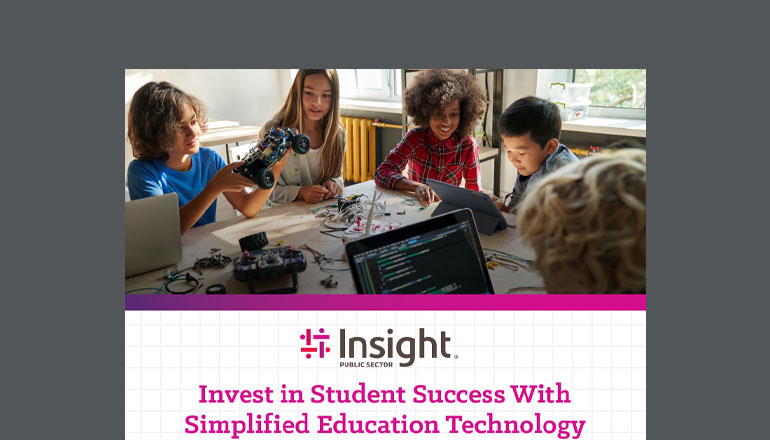The Function of Education And Learning in Building a Comprehensive Educational Website for All
The function of education and learning in developing a detailed educational site for all is significantly acknowledged as vital in today's diverse society. This inquiry welcomes more expedition right into the characteristics of educational equity and performance.
Importance of Inclusivity

When educational websites focus on inclusivity, they create a society of belonging where every trainee really feels valued and empowered. This atmosphere motivates active involvement, collaboration, and shared respect among learners, facilitating more powerful interpersonal relationships. Additionally, inclusive practices add to enhanced academic end results, as students are most likely to involve with the curriculum when they see their identifications reflected and respected.
Moreover, inclusivity prepares students for a varied labor force and culture, outfitting them with the skills necessary to browse and contribute positively to diverse settings. By welcoming inclusivity, academic sites not only fulfill their honest obligations but likewise enhance the instructional landscape, inevitably benefiting students, instructors, and the community at large. Cultivating inclusivity is crucial for the development of effective and fair education.
Leveraging Technology for Knowing
Incorporating innovation right into instructional sites improves inclusivity by supplying varied knowing devices and sources customized to specific needs. Digital platforms permit the integration of multimedia sources, such as video clips, interactive simulations, and gamified learning experiences, which deal with varying learning designs. This ease of access makes sure that learners can engage with material in manner ins which reverberate with them, fostering a much deeper understanding of subject.
In addition, modern technology promotes real-time feedback and individualized discovering paths. Through flexible learning modern technologies, educational websites can evaluate private efficiency information, making it possible for tailored web content distribution that meets each learner's rate and efficiency degree. This technique not just enhances engagement yet also equips pupils to take ownership of their discovering trip.

Ingenious Mentor Approaches

One famous technique is project-based discovering (PBL), which urges trainees to engage in hands-on tasks that resolve complicated concerns or difficulties. This approach fosters cooperation, creativity, and analytical skills, all of which see here now are vital in today's workforce. Flipped class have gotten grip, where conventional discovering is reversed; trainees assess lecture products at home and engage in interactive tasks throughout course time, promoting much deeper understanding and retention.
Another substantial trend is the assimilation of gamification right into education and learning. By including video game elements into lessons, instructors motivate learners and enhance participation through competition and incentives. Additionally, differentiated instruction tailors finding out experiences to meet the varied requirements of students, permitting personalized understanding paths that adjust to differing capacities and rate of interests.
Partnership and Area Building
Often, cooperation and area building are acknowledged as vital elements of efficient education, cultivating a inclusive and encouraging understanding setting. These components develop a structure where trainees, teachers, and area members can involve in meaningful interactions, boosting the educational experience for all participants.
Cooperation encourages the sharing of ideas, resources, and proficiency, promoting a richer understanding process. This vibrant helps to break down silos within the instructional community, advertising interdisciplinary methods that can resolve complex issues. By collaborating, instructors can create innovative curricula that mirror varied point of views while fulfilling the varied requirements of trainees.
Neighborhood structure goes together with partnership, as it cultivates a feeling of belonging among all stakeholders. They are a lot more browse around this site likely to invest time and resources into cumulative objectives when individuals feel linked to their educational area. This common dedication can lead to boosted motivation, boosted academic end results, and greater retention rates.
Additionally, promoting cooperation and community building can additionally extend past the class, including moms and dads, local organizations, and companies. These partnerships can offer assistance and resources that boost academic opportunities, ultimately adding to a much more detailed instructional site for all.
Determining Success and Effect
The efficiency of cooperation and community building in academic settings can be examined through numerous metrics that determine success and effect. These metrics might include trainee engagement degrees, academic efficiency, retention prices, and area responses. By using quantitative data such as test ratings and college graduation rates, educational stakeholders can assess the general effectiveness of joint initiatives.
Furthermore, qualitative evaluations, such as surveys and focus teams, supply important understandings into participant fulfillment and regarded advantages of community-building activities. On a regular basis tracking these metrics allows educators to identify locations of stamina and those requiring renovation, making sure that collective efforts continue to be impactful and concentrated.
Furthermore, longitudinal research studies can aid determine the long-lasting effects of instructional collaborations on trainee outcomes and area development. These analyses can reveal fads gradually, showing just how sustained partnership fosters an environment for finding out and growth.
Ultimately, specifying success in educational setups needs a multifaceted strategy, incorporating both qualitative and quantitative data. By continually examining the impact of collaboration and community-building campaigns, academic sites can improve their strategies, guaranteeing they meet the diverse requirements of all stakeholders entailed.
Conclusion
In verdict, education and learning offers as a foundation in establishing a detailed educational site that focuses on inclusivity for all students. Ultimately, the dedication to inclusivity and equity prepares trainees for success in an interconnected and diverse globe, enhancing the transformative power of education and learning.
The value of inclusivity in academic sites can not be overemphasized, as it plays a crucial duty in fostering a knowing environment that accommodates varied histories and capabilities. Inclusivity ensures that all trainees, regardless of their socio-economic standing, ethnic background, sex, or finding out capacities, have fair access to instructional sources and opportunities.When academic websites prioritize inclusivity, they produce visit site a culture of belonging where every student really feels valued and encouraged. By embracing inclusivity, instructional websites not just fulfill their moral responsibilities yet also enhance the academic landscape, ultimately benefiting trainees, instructors, and the area at large.The efficiency of collaboration and community structure in academic settings can be evaluated via different metrics that gauge success and influence.